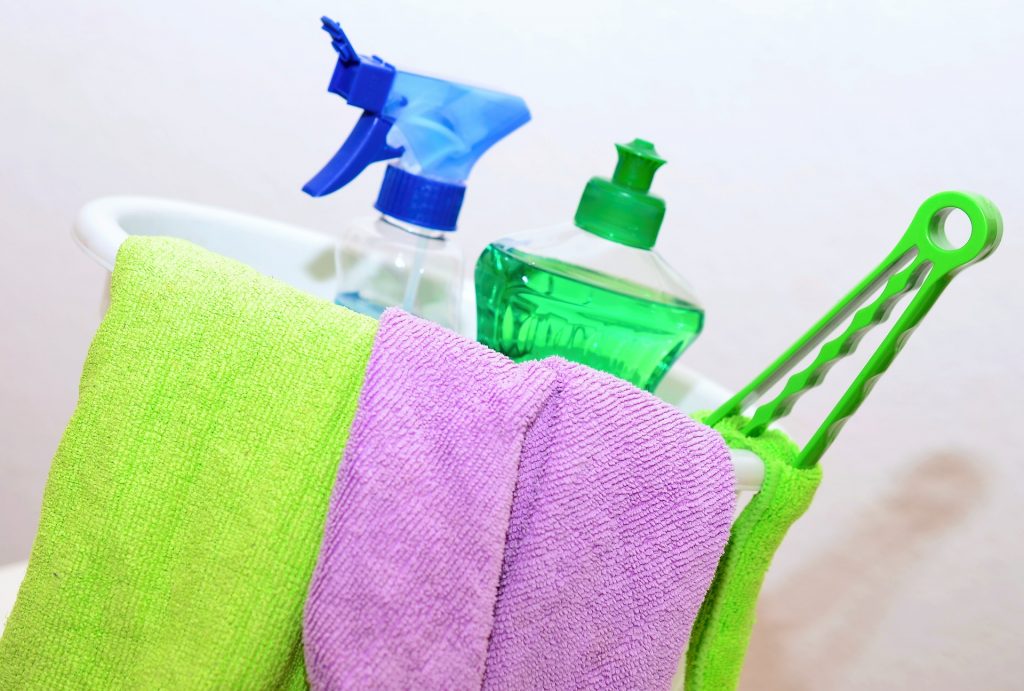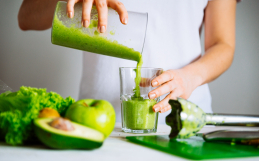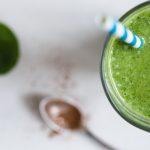Here at the Conscious Cleanse, we are passionate about detoxing the body through food, but we also know that we must look at our health from a broader perspective. In our modern world, exposure to toxins is a daily, even hourly occurrence. From the air we breathe to our use of conventional beauty products, our bodies are constantly being exposed to toxins.
Today we want to talk about barrage of toxins that could be lurking in your own home. If you’re reading this, it’s likely that you’ve worked towards cleaning up your diet. Perhaps you’ve even cleaned up your skin care routine (If you missed our Clean Summer Skincare Essentials you can access the guide here). So let’s pull back another layer of the onion and look at what toxins we might unknowingly be exposed to in our homes.
Indoor air pollution is not discussed as frequently as environmental pollution in general, but it’s just as important. Based on statistics from the Global Burden of Disease, poor air quality is the 4th highest ranked health risk globally. And, according to the EPA, indoor air quality is even worse than outdoors, with chemicals and toxic substances present at concentrations up to 10 times higher than those outside. So even if the outdoor air quality where you live is relatively good, the air inside your house could be far worse. Yikes!
Many of the problems with indoor air quality can be linked to volatile organic compounds, or VOCs. VOCs are gases that are emitted from certain solids or liquids, and can include a wide variety of chemicals that cause either short or long-term health issues, especially for those who have chemical sensitivity. Thousands of common household products (cleaners, paints, varnishes, fuels, etc.) emit VOCs–whether they’re currently in use or even just in storage.
Plastic “Tupperware” containers, cookware, laundry supplies–all of these things contain chemicals that can be leached into your food or absorbed by your skin. Any product with “fragrance” in it likely contains phthalates, a category of chemicals that have been linked to neurological issues, birth defects, and even cancer.
So what can you do to decrease your home’s toxic load? There’s a lot to cover on this topic so today, we’ve come up with our top 10 things you can do right now to begin to detoxify your home.

10 Tips to Detox Your Home
- Replace household cleaning products: Many conventional cleaners contain nasty chemicals that enter the air as VOCs. Get rid of all conventional products (even in storage because they too will affect your air quality). Switch to non-toxic cleaners; Branch Basics is our favorite brand.
- Switch laundry supplies: Many conventional laundry detergents, dryer sheets, and fabric softeners contain harmful chemical additives and fragrances. We recommend Molly’s Suds or Branch Basics for non-toxic detergents and Tumbler Sheets by Echo Beach Products or Molly’s Wool Balls in place of conventional dryer sheets.
- Don’t store paints, thinners, pesticides in your home: Even when sealed and not in use, these products can give off VOCs. Even storing them in the garage can diminish the air quality in your house. We recommend safely disposing of any products you’re not using. If you really need to store these products, make sure it is somewhere away from your house, like in a shed.
- Change all plastic food storage to glass: Many plastic food storage containers, water bottles, and some consumer food packaging contain BPA, or bisphenol A. BPA has been linked to neurological problems and birth defects. Make sure to store food in glass whenever possible and check the products you buy to make sure they too are BPA-free.
- Cookware: Most non-stick cookware is coated with PFASs (Teflon and other chemicals). These chemicals have been linked to liver malfunction, fertility issues, birth defects, thyroid disruption, a variety of cancers, and other medical issues. Use cast iron cookware when possible.
- Always take off your shoes indoors: Wearing shoes indoors can bring in a wide variety of outdoor toxins like pesticides and herbicides and spread them all over your house. Make sure to always remove shoes when you come inside.
- Mattresses: Mattresses, surprisingly enough, can contain synthetics and chemicals that can off-gas into your home. Mattress companies are not even required by law to even disclose these harmful flame-retardant chemicals. Look for a mattress made from natural and organic materials (we love Naturepedic). You can also air it out outdoors before bringing it into your house.
- Get a HEPA Vacuum: HEPA, which stands for High Efficiency Particulate Air, describes a vacuum that removes even very small particles (pollen, dust, chemical particulates, etc.) that would normally be recirculated into the air by your everyday regular vacuum cleaner. Having this type of suped-up vacuum cleaner can help remove toxic particles from your home. We like the Miele HEPA Vacuums.
- Check your air fresheners: Air freshener sprays, plugins, scented candles, and even some essential oils contain formaldehyde, a known carcinogen. A safer method is to boil or simmer a pot of water with herbs, spices, and/or fruit to create a natural scent. We like our essential oil diffusers, just make sure you’re using essential oils that do not contain any added synthetic fragrances. We like Young Living Essential Oils and doTERRA brands.
- Get an air purifier: Although this is quite an investment, high-tech air purifiers can greatly improve the air quality of your home. We recommend the IQ Air Purifier or the more affordable option Atem Personal System from IQ air. Having a house full of plants is another efficient way to filter the air. Check out this list from Branch Basics’ blog, which lists houseplants that remove formaldehyde. How cool is that?






